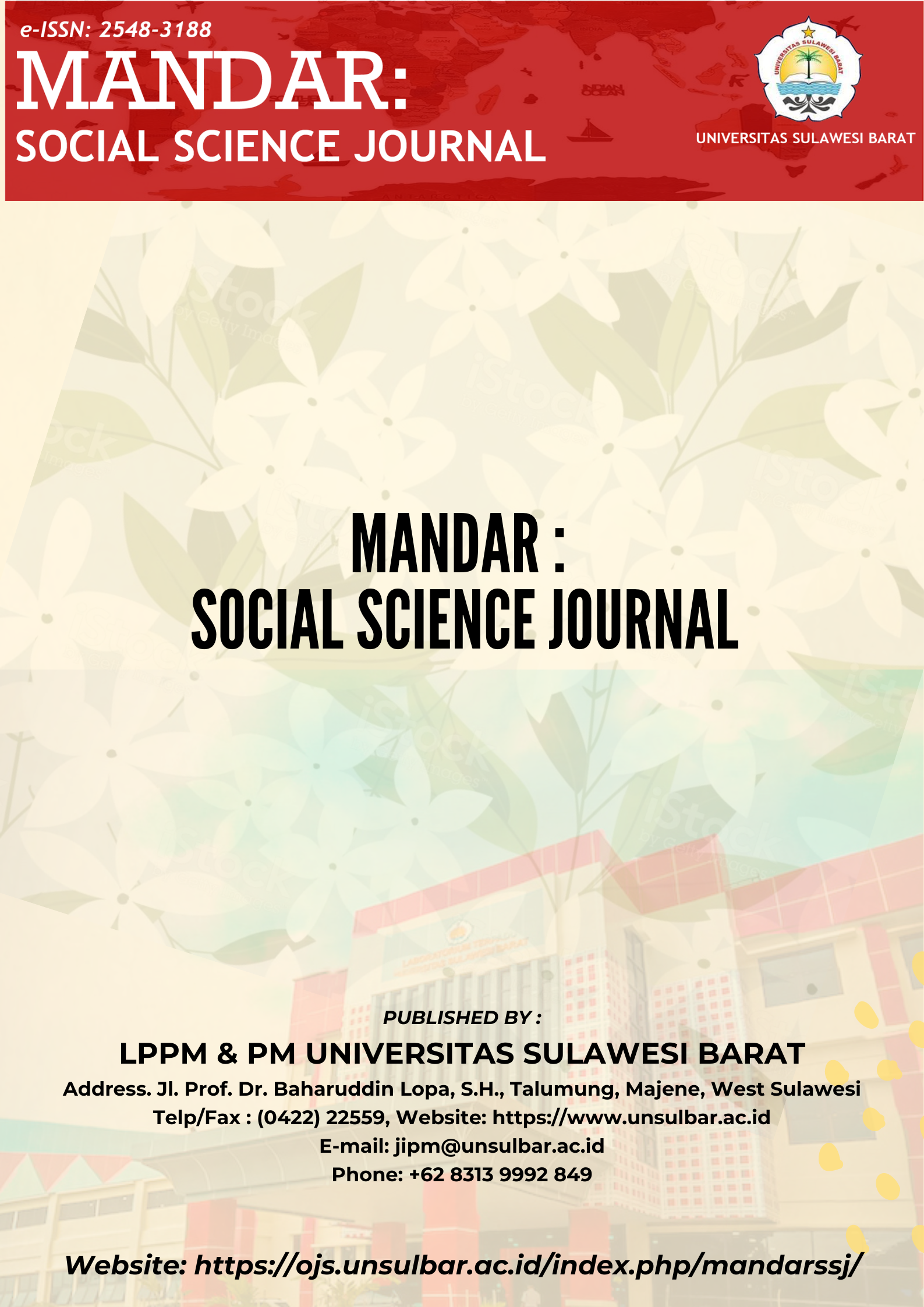Main Article Content
Abstract
Tradition according to Koentjaraningrat (Koentjaraningrat, 2003) is an action carried out by society for a long time and has become part of the habits of a group of people who are usually from the same country, culture or religion.The aim of this research is to get to know more about cultural forms massawe' sayyang pattudu and describe cultural identity massawe in Islamic law. The research method in this writing uses a descriptive qualitative type of research or literature review, namely research that produces written and verbal descriptions with observable behavior. This research is research that applies normative juridical methods. Results of this research messawe sayyang pattu'du viewed from the perspective of Islamic law, it certainly does not appear to be an Islamic tradition. Rather, it is a process of renewal between Islam and traditional culture that has been made relevant by an Islamic cleric in the land of Mandar. This is because the application of customary law does not necessarily take the form of a collective agreement. culture massawe sayyang pattudu It can be concluded that this is the identity of the Mandar tribe which aims as a form of entertainment for the community and also as motivation for children to be more active in studying the Quran and reciting it.
Keywords
Article Details
Authors who publish their manuscripts in this Journal agree to the following conditions:
- Copyright in each article belongs to the Universitas Sulawesi Barat (Copyright ©)
- The author acknowledges that this journal has the right to publish articles with the copyright holder to Universitas Sulawesi Barat.
- It is prohibited by law to copy or duplicate part or all of the contents of articles in this journal in any way and in any form and is prohibited from distributing the articles either electronically or printed without written permission from the Mandar Social Science Journal
References
- A.Djazuli. (2005). Penggalian, Perkembangan dan Penerapan Hukum Islam. Kencana Prenada Media Grroup.
- Ahmad Fahmi abu Sinnah dan muhammad Mushafa Syalabi. (n.d.). al-Urf wa Al-adah fi rayi al-fuquha dan Ushul al-fiqh al-islami. Maktabah al-Azhar, Dar al- Nahdhah al-Arabiyah.
- Al-Sahi, A. (1989). Al-Madkhai li Dirasat al-Fiqh al-islamy. Dar al-Wafa.
- Dahlan, A. R. (2010). Ushul Fiqh. Amzah.
- Djalil, A. B. (2010). Ilmu Ushul Fiqh (Satu dan Dua). Kencana Prenada Media Grroup.
- Dwi Arjulina, Nurlela, D. A. S. (n.d.). PERSEPSI MASYARAKAT LOKAL TERHADAP KESENIAN SAYYANG PATTU’DU PADA BUDAYA MANDAR (STUDI DESKRIPTIF DI KECAMATAN TINAMBUNG KABUPATEN POLEWALI MANDAR PROVINSI SULAWESI BARAT). ALLIRI : JOURNAL AL OF ANTHPOLOGY, 3, 7.
- Homans, G. C. (1961). Social behavior: Its Elementary Forms. Routledge & Kegan Paul.
- Kadir, muhammad abdul. (2004). Hukum dan Penelitian Hukum (cet .1). PT.Citra Aditya Bakti.
- Khallaf, A. al-W. (160 C.E.). Mashadir al-Tasyri fi ma la nassha fiih. Dar al- fikr al-Arabi.
- Khallaf, A. al-W. (1990). Imu Ushul Fiqh. Maktabah al-Dakwah al-Islamiyah.
- Mawardi, A. al-H. A. I. M. I. H. al-B. al-B. (1985). Al-Ahkam as- Sulanniyah wa al- Walayat Ad-Diniyyah. Dar al- Kothob.
- Paloma, M. (2000). Sosiologi Kontempore/ Margaret M. Poloma. Rajawali Pers.
- Ruhiyat. (2017). Tradisi Sayyang Pattu’du di Mandar . Jurnal Studi Agama Dan Masyarakat , 13(Nomor 1), 1–26.
- Rummens, J. W. (1993). Person Identity and Social Structure in saint maartin: A Plural Indentity Approach. Yourk University.
- Schacht, J. (1964). An Introduction to Islamic Law. The Clarendon Press.
- Soerjono, S., & Mamudji, S. (2015). Penelitian Hukum Normatif :Suatu Tinjauan Singkat. Rajawali Pers.
- Sztompka, P. (2012). sosiologi perubahan. Prenada.
- Zahra, al-I. M. A. (1958). Ushul Fiqh. Dar al- fikr al-Arabi.

